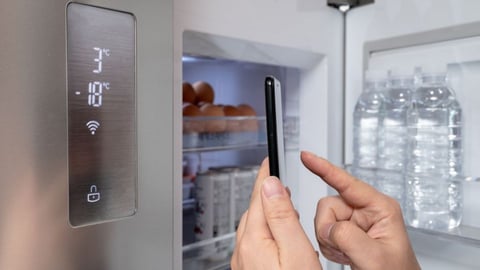How Amazon Says AI-Powered ‘Private Investigator’ Can Help Sellers Minimize Returns
Across Amazon’s North America fulfillment network, the company is implementing an artificial intelligence-powered model called Project P.I. (Private Investigator) to help sellers detect defects in their products and reduce instances of returns.
The technology puts items slated for shipment through an imaging tunnel where Project P.I. uses computer vision to evaluate and detect any defects, analyzing color and monochrome images for signs of product damage. Items that are flagged get sent to Amazon associates for further review to decide if the item can be resold at a discounted price as part of Amazon’s Second Chance site or donated.
“We want to get the experience right for customers every time they shop in our store,” said Dharmesh Mehta, vice president of worldwide selling partner services at Amazon. “By leveraging AI and product imaging within our operations facilities, we are able to efficiently detect potentially damaged products and address more of those issues before they ever reach a customer, which is a win for the customer, our selling partners, and the environment.”
Amazon gives the example of being able to alert manufacturers who put the wrong size on a product to prevent the error from occurring again. “By reducing the number of defective products that are shipped to customers, we’re also reducing the overall number of returns,” said Amazon in a blog.
AI Being Used For Cross-Checking
The company has taken this a step further, using generative AI with a multi-modal system to analyze customer complaints from fulfilled orders and comparing them against the Project P.I. images to assess root cause of the issue.
For example, if a consumer ordered twin-size sheets but received king-size, the system cross-references the feedback with those Project P.I. images to determine if the product label was visible and if it read king or twin.
The company’s recent computer vision efforts hope to catch these errors before they’re shipped out, however.
“We know that correcting the defects after they happen is not the best way to protect and improve the customer experience. That’s why we started exploring what kind of data we can gather further upstream,” said Pingping Shan, director of perfect order experience at Amazon. “Those discussions eventually led to leveraging the tunnel images to better identify products with defects and take surgical and proactive action to address them — before they’re packaged and shipped.
Where Does It Go From Here?
The company said it has seen results from some of these efforts, which began as early as 2022 with earlier iterations of optical character recognition technology.
The company hopes to advance these efforts by achieving near real-time product defect detection with local image processing so defective items can be immediately pulled off the conveyor belt and a replacement automatically ordered to eliminate fulfillment disruptions.
Additionally, Amazon is looking at how it can refine its computer vision technology to better identify and correctly translate different languages to adapt to the “unique nuances of each fulfillment center and region.”





